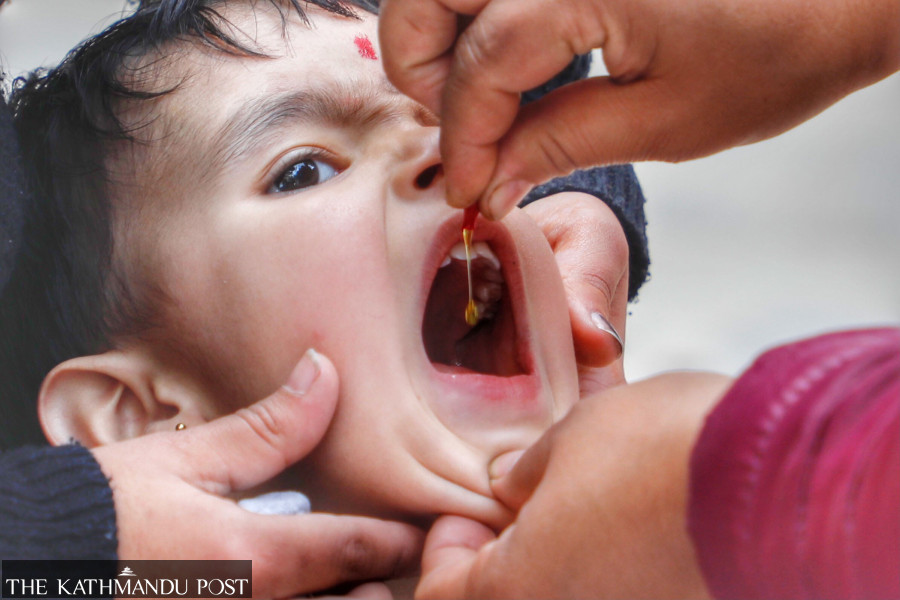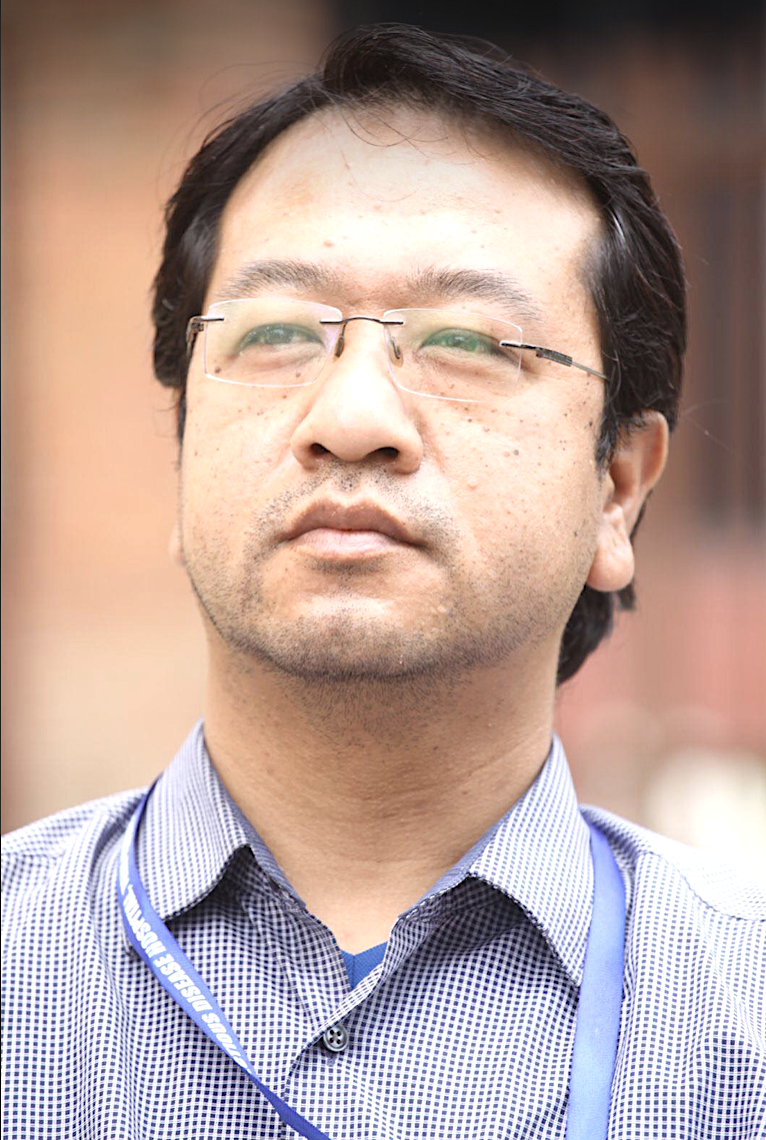Columns
Re-emerging poliovirus in Nepal
Surveillance and vaccination are important to sustain Nepal’s polio eradication status.
Dr Sher Bahadur Pun
The World Health Organisation (WHO) declared Nepal polio-free in 2014 after the country maintained the status for three consecutive years. Nevertheless, a few days back, the Ministry of Health and Population (MoHP) announced the re-emergence of the poliovirus, prompting preparations for a polio vaccination drive in Kathmandu. Although the virus was found in sewage/river water samples rather than clinical samples, it raises a grave concern regarding public health threats in Nepal.
Polio is a highly infectious but vaccine-preventable viral disease primarily transmitted through the fecal-oral route. It can also spread through contaminated water and food. Symptoms usually become visible seven to 10 days after exposure but can range from four to 35 days. The maximum excretion of the virus can be observed two to three days before the onset of symptoms and one week after the symptoms appear. There are three poliovirus strains: Wild poliovirus type-1 (WPV-1), wild poliovirus type-2 (WPV-2) and wild poliovirus type-3 (WPV-3). Fever, fatigue, vomiting, headache, stiff neck and limb pain are the initial symptoms which usually last for about a week. Up to 90 percent of infected individuals show mild or no symptoms.
A small proportion of cases develop irreversible paralysis, usually of the lower limbs. Of these (paralysed patients), five to 10 percent die due to respiratory failure. Serology tests, cell cultures and polymerase chain reactions (PCR) are laboratory methods to identify the virus. As per available information, samples found in the sewage of Kathmandu were
sent to Bangkok for laboratory testing to confirm the virus. The genetic sequencing method can help identify mutations in the virus and their origin. Presently, the source of the poliovirus detected in Nepal remains unknown. No specific anti-viral medicine is available for poliovirus and treatment is mainly supportive.
The oral polio vaccine (OPV) is widely used worldwide, including in Nepal. It contains live, weakened poliovirus, which replicates in the body of the vaccinated child and spreads to others when the child excretes. If such a weakened virus circulates for an extended period in the community, it can be mutated and cause paralysis in an unvaccinated infected patient. Poliovirus mutated from the original strains (in the OPV) is known as vaccine-derived poliovirus. The OPV contains a combination of up to three strains of live poliovirus.
Nepal had switched to bivalent OPV from trivalent OPV on April 17, 2016. The bivalent OPV (bOPV) vaccine contains types 1 and 3 weakened polioviruses, protecting against poliovirus types 1 and 3. The virus currently detected in Kathmandu is said to be vaccine-derived poliovirus type-3, meaning this virus may have escaped from bOPV or circulated for a long time. Interestingly, Israel also reported vaccine-derived poliovirus type-3 in March 2022. However, it is not clear if there is any relationship between Israeli and Nepali polioviruses. Moreover, without genetic sequencing analysis, it is not possible to firmly establish Israel as the country of origin of the Nepali poliovirus.
Nepal experienced multiple waves of measles outbreaks in 2023. The reasons behind these unusual outbreaks remain unknown and have not been investigated; the potential explanation could be the interruption of childhood immunisation programmes due to fear of SARS-CoV-2 (Covid-19) transmission (during the pandemic). In fact, I had predicted and warned about the possibility of outbreaks of vaccine-preventable infectious diseases in children in the absence of a regular immunisation programme owing to Covid-19 waves.
The impact of SARS-CoV-2 on poliovirus needs to be explored to understand its shifting clinical nature and genetic coding. There are ample studies published about post-impact of Covid-19 waves on non-communicable diseases, for example, post-Covid syndrome. However, little is known about the immune system and its reaction to infectious diseases following Covid-19 waves.
Several countries, such as India (type-1), the UK (type-2), the US (type-2), Indonesia (type-2) and Israel (type-3) have reported circulating vaccine-derived polioviruses during the same year (2022), meaning that these mutated strains of polioviruses emerged in a similar time-period following multiple waves of Covid-19 worldwide. It seems that the emergence of vaccine-derived polioviruses could happen anywhere and anytime in the days to come. This sparks a grave concern because vaccine-derived poliovirus can also behave like wild-type viruses, cause outbreaks and lead to paralytic presentations in unvaccinated individuals. For instance, Indonesia reported acute flaccid paralysis cases in two patients (a six-year-old female and a one-year-old male) after they were infected with circulating vaccine-derived poliovirus type-2.
Many researchers believe that low vaccination coverage and the weakened virus from OPV spreading among under-immunised populations foster conditions conducive to the emergence of vaccine-derived polioviruses in the community. At present, the origin of vaccine-derived poliovirus detected in the sewage of Kathmandu is not clear. Vaccine-derived poliovirus type-3 detected (as per media report) in Kathmandu due to the circulating of the weakened virus from OPV among the under-immunised population could be a plausible explanation, as Nepal is currently using a bivalent polio vaccine (bOPV) in its immunisation programme that contained poliovirus type-1 and type-3.
As of now, the emergence of vaccine-derived poliovirus may not pose a significant health risk for the community. Nonetheless, the persistent detection of these mutated viruses within the community or in outbreak situations can pose significant public health challenges in Nepal and around the world. Thus, maintaining surveillance and adherence to vaccination in children is important to sustain Nepal’s polio eradication status.




 17.12°C Kathmandu
17.12°C Kathmandu















